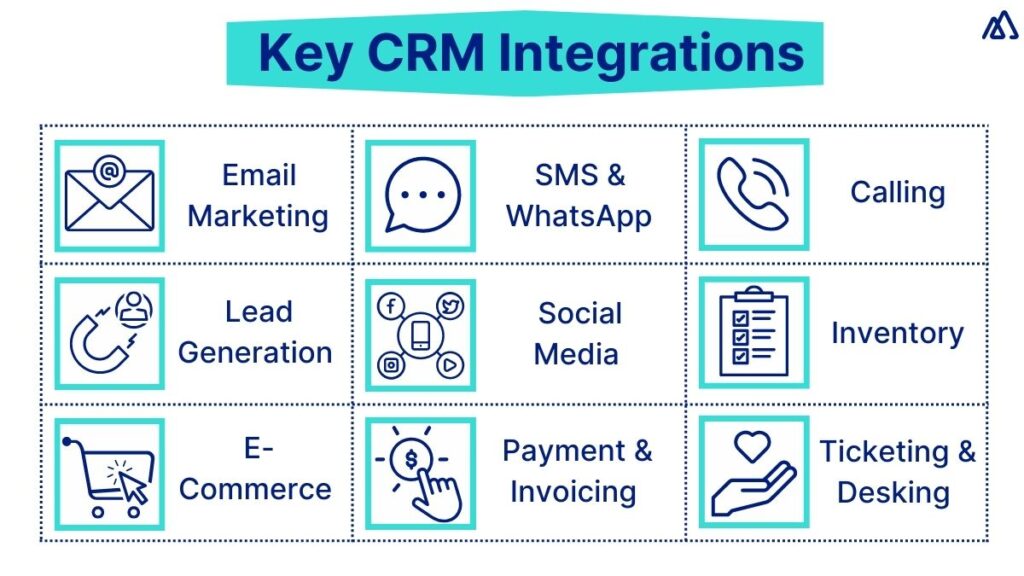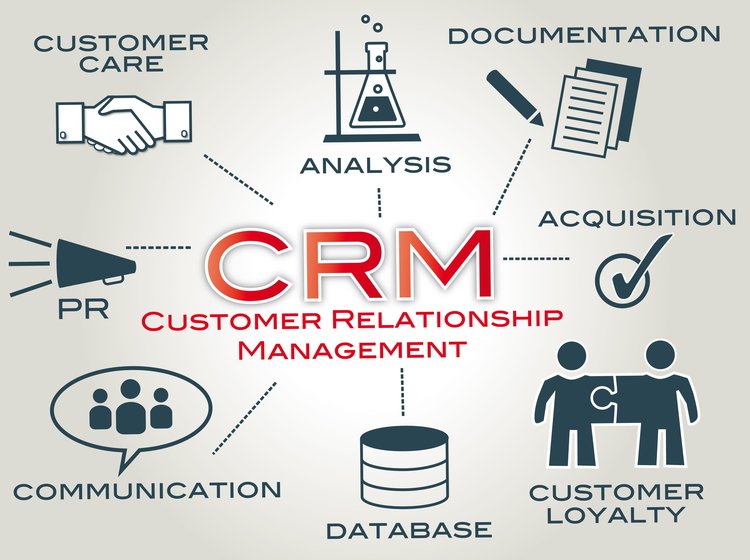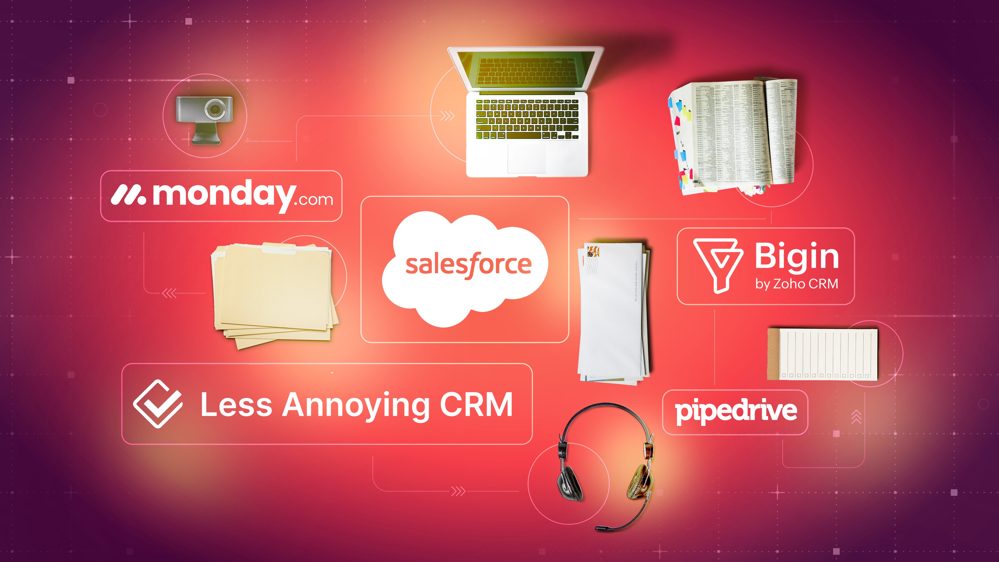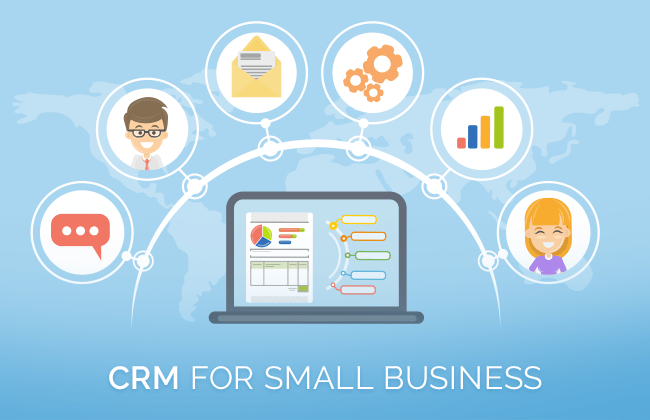
In today’s fast-paced business environment, staying ahead of the competition requires more than just a great product or service. It demands a deep understanding of your customers and the ability to engage with them effectively. This is where the power of CRM marketing integration comes into play. By seamlessly connecting your Customer Relationship Management (CRM) system with your marketing automation tools, you can create a unified view of your customers, personalize their experiences, and drive significant business growth. This comprehensive guide delves into the intricacies of CRM marketing integration, providing you with the knowledge and strategies to transform your business.
What is CRM Marketing Integration?
At its core, CRM marketing integration is the process of connecting your CRM system, which stores customer data, with your marketing automation platform, which handles your marketing activities. This integration allows for a two-way flow of information, enabling you to:
- Gain a 360-degree view of your customers: Access all customer interactions, preferences, and purchase history in one centralized location.
- Personalize marketing campaigns: Tailor your messaging and offers based on individual customer data and behavior.
- Automate marketing processes: Streamline repetitive tasks like email marketing, lead nurturing, and social media posting.
- Improve lead generation and qualification: Identify and nurture leads more effectively, increasing conversion rates.
- Enhance sales and marketing alignment: Ensure that sales and marketing teams are working together towards the same goals.
Without integration, your sales and marketing teams often operate in silos, leading to inefficiencies, missed opportunities, and a disjointed customer experience. CRM marketing integration bridges this gap, creating a cohesive and data-driven approach to customer engagement.
Benefits of CRM Marketing Integration
The advantages of integrating your CRM and marketing systems are numerous and far-reaching. Here are some of the most significant benefits:
1. Enhanced Customer Understanding
Integration provides a holistic view of your customers. You can see their entire journey with your company, from initial contact to purchase and beyond. This includes:
- Demographic data: Age, location, income, and other relevant information.
- Behavioral data: Website visits, email opens, clicks, and product interactions.
- Purchase history: What they bought, when they bought it, and how much they spent.
- Customer service interactions: Support tickets, chat logs, and phone calls.
With this comprehensive understanding, you can segment your audience more effectively, create targeted marketing campaigns, and personalize customer interactions to maximize engagement and conversions.
2. Improved Marketing Efficiency
Integration streamlines your marketing efforts, automating tasks and eliminating manual processes. This leads to significant time savings and improved efficiency. For example:
- Automated email marketing: Trigger personalized emails based on customer behavior, such as welcome emails, abandoned cart reminders, and product recommendations.
- Lead nurturing workflows: Automatically guide leads through the sales funnel with targeted content and follow-up emails.
- Social media automation: Schedule and manage social media posts, track engagement, and respond to customer inquiries.
- Lead scoring: Automatically score leads based on their engagement and behavior, helping you prioritize your efforts.
By automating these tasks, you can free up your marketing team to focus on more strategic initiatives, such as content creation, campaign planning, and data analysis.
3. Increased Sales and Revenue
Integration directly contributes to increased sales and revenue by:
- Improving lead generation: Identify and nurture qualified leads more effectively, increasing the number of sales-ready prospects.
- Boosting conversion rates: Personalize marketing campaigns and offers to increase the likelihood of conversions.
- Increasing customer lifetime value: Provide personalized experiences and build stronger customer relationships to encourage repeat purchases and loyalty.
- Enhancing sales and marketing alignment: Ensure that sales and marketing teams are working together to achieve common goals, leading to a more efficient sales process.
By optimizing your sales and marketing efforts, you can drive more leads, close more deals, and generate more revenue.
4. Better Customer Experience
In today’s customer-centric world, providing a positive customer experience is crucial for success. CRM marketing integration helps you achieve this by:
- Personalizing customer interactions: Tailor your messaging and offers based on individual customer data and preferences.
- Providing consistent communication: Ensure that your customers receive consistent messaging across all channels.
- Offering proactive customer service: Anticipate customer needs and provide support before they even ask for it.
- Building stronger customer relationships: Create personalized experiences that make your customers feel valued and appreciated.
By focusing on the customer experience, you can build brand loyalty, increase customer satisfaction, and drive long-term business growth.
5. Data-Driven Decision Making
Integration provides you with a wealth of data that can be used to make informed decisions. You can track key metrics, analyze campaign performance, and identify areas for improvement. This data-driven approach allows you to:
- Optimize marketing campaigns: Identify which campaigns are performing well and which ones need to be adjusted.
- Improve lead generation and qualification: Identify the most effective lead sources and refine your lead scoring process.
- Personalize customer experiences: Tailor your messaging and offers based on customer behavior and preferences.
- Forecast sales and revenue: Use data to predict future sales and revenue trends.
By leveraging data, you can make more informed decisions, optimize your marketing efforts, and drive better business results.
Key Features to Look for in CRM Marketing Integration
When choosing a CRM marketing integration solution, it’s important to consider the following key features:
1. Two-Way Data Synchronization
The integration should allow for a two-way flow of data between your CRM and marketing automation platform. This ensures that both systems are always up-to-date with the latest customer information and marketing activities.
2. Customizable Data Mapping
The ability to map data fields between your CRM and marketing automation platform is crucial. This allows you to customize the data that is synchronized and ensure that the information is accurate and consistent across both systems.
3. Segmentation Capabilities
The integration should enable you to segment your audience based on various criteria, such as demographics, behavior, and purchase history. This allows you to create targeted marketing campaigns that resonate with your customers.
4. Automation Workflows
Look for a solution that offers robust automation workflows. This allows you to automate repetitive marketing tasks, such as email marketing, lead nurturing, and social media posting.
5. Reporting and Analytics
The integration should provide detailed reporting and analytics, allowing you to track key metrics, analyze campaign performance, and identify areas for improvement.
6. User-Friendly Interface
The integration should be easy to use and understand, even for users who are not tech-savvy. A user-friendly interface will ensure that your team can quickly and easily implement and manage the integration.
7. Scalability
The integration should be scalable to accommodate your growing business needs. As your business grows, you’ll need a solution that can handle increasing volumes of data and marketing activities.
8. Integration with Other Tools
Consider whether the integration solution integrates with other tools you use, such as e-commerce platforms, social media platforms, and customer service software. This will help you create a more integrated and streamlined customer experience.
How to Implement CRM Marketing Integration
Implementing CRM marketing integration can seem daunting, but by following these steps, you can ensure a smooth and successful transition:
1. Define Your Goals and Objectives
Before you begin, clearly define your goals and objectives for the integration. What do you hope to achieve? Are you looking to improve lead generation, increase sales, or enhance customer satisfaction? Having clear goals will help you choose the right solution and measure your success.
2. Choose the Right CRM and Marketing Automation Platforms
Select CRM and marketing automation platforms that meet your business needs. Consider factors such as:
- Features: Does the platform offer the features you need, such as lead scoring, segmentation, and automation workflows?
- Integration capabilities: Does the platform integrate with your existing tools and systems?
- Ease of use: Is the platform user-friendly and easy to learn?
- Pricing: Does the platform fit within your budget?
- Scalability: Can the platform scale to accommodate your growing business needs?
Popular CRM platforms include Salesforce, HubSpot CRM, Zoho CRM, and Microsoft Dynamics 365. Popular marketing automation platforms include HubSpot Marketing Hub, Marketo, Pardot, and ActiveCampaign.
3. Choose an Integration Method
There are several ways to integrate your CRM and marketing automation platforms:
- Native integration: Some CRM and marketing automation platforms offer native integrations, which are pre-built and easy to set up.
- Third-party integration tools: Several third-party tools offer integration capabilities, such as Zapier, PieSync, and Automate.io.
- Custom integration: If you have specific requirements, you may need to create a custom integration using APIs.
Choose the integration method that best suits your needs and technical expertise.
4. Plan Your Data Mapping
Carefully plan how you will map data fields between your CRM and marketing automation platforms. This ensures that the data is accurate and consistent across both systems. Consider which data fields you need to synchronize and how they will be mapped.
5. Test and Refine
Before launching your integration, thoroughly test it to ensure that it is working correctly. Verify that data is being synchronized accurately and that your automation workflows are functioning as expected. Make any necessary adjustments and refine your integration based on your testing results.
6. Train Your Team
Provide training to your sales and marketing teams on how to use the integrated system. This will ensure that they understand how to access and use the data, create targeted campaigns, and track performance. Provide ongoing support and training as needed.
7. Monitor and Optimize
Continuously monitor the performance of your integration and make adjustments as needed. Track key metrics, such as lead generation, conversion rates, and customer engagement. Analyze your data and identify areas for improvement. Regularly review your integration and make sure it’s aligned with your business goals.
Best Practices for CRM Marketing Integration
To maximize the benefits of CRM marketing integration, follow these best practices:
1. Start Small
Don’t try to integrate everything at once. Start with a small, manageable project and gradually expand the integration as you gain experience and confidence. This will help you avoid overwhelming your team and ensure a smoother transition.
2. Focus on Data Quality
Ensure that your data is clean, accurate, and up-to-date. Poor data quality can lead to inaccurate insights, ineffective marketing campaigns, and a poor customer experience. Regularly review and update your data to maintain its quality.
3. Segment Your Audience
Segment your audience based on various criteria, such as demographics, behavior, and purchase history. This will allow you to create targeted marketing campaigns that resonate with your customers and improve your conversion rates.
4. Personalize Your Messaging
Personalize your messaging based on individual customer data and preferences. This will make your customers feel valued and appreciated, and it will increase the likelihood of engagement and conversions. Use dynamic content, personalized email subject lines, and targeted offers to create personalized experiences.
5. Automate Your Workflows
Automate repetitive marketing tasks, such as email marketing, lead nurturing, and social media posting. This will free up your marketing team to focus on more strategic initiatives and improve your marketing efficiency.
6. Align Sales and Marketing
Ensure that your sales and marketing teams are working together towards the same goals. Share data, align on messaging, and collaborate on campaigns. This will improve your sales process and drive better business results.
7. Measure and Analyze
Track key metrics, such as lead generation, conversion rates, and customer engagement. Analyze your data and identify areas for improvement. Use your data to make informed decisions and optimize your marketing efforts.
Examples of Successful CRM Marketing Integration
Many businesses have successfully implemented CRM marketing integration and achieved significant results. Here are a few examples:
1. HubSpot and Salesforce
HubSpot and Salesforce, two popular CRM and marketing automation platforms, offer a robust integration that allows businesses to seamlessly sync data, automate workflows, and track performance. Businesses using this integration have reported significant improvements in lead generation, sales conversion rates, and customer engagement.
2. Marketo and Microsoft Dynamics 365
Marketo and Microsoft Dynamics 365 provide a powerful integration that allows businesses to align their sales and marketing efforts, personalize customer experiences, and drive revenue growth. This integration enables businesses to track leads, manage customer data, and automate marketing campaigns.
3. ActiveCampaign and Zoho CRM
ActiveCampaign and Zoho CRM integrate to offer businesses a comprehensive solution for marketing automation and CRM. The integration allows for detailed contact management, targeted email campaigns, and automated customer journeys. This combination helps businesses nurture leads, improve customer relationships, and boost sales.
These are just a few examples of the many successful CRM marketing integrations that are driving business growth. By implementing the right integration solution and following best practices, you can transform your business and achieve significant results.
The Future of CRM Marketing Integration
The future of CRM marketing integration is bright, with continued advancements in technology and a growing focus on customer experience. Here are some trends to watch:
1. Artificial Intelligence (AI) and Machine Learning (ML)
AI and ML are being used to automate tasks, personalize customer experiences, and provide deeper insights into customer behavior. AI-powered CRM and marketing automation platforms can analyze data, identify patterns, and make predictions, allowing businesses to optimize their marketing efforts and improve their customer relationships.
2. Enhanced Personalization
Businesses are increasingly focused on providing personalized experiences to their customers. CRM marketing integration allows businesses to tailor their messaging and offers based on individual customer data and preferences. This trend will continue as businesses strive to create more relevant and engaging customer experiences.
3. Omnichannel Marketing
Customers interact with businesses across multiple channels, including email, social media, website, and mobile apps. CRM marketing integration allows businesses to create a seamless omnichannel experience by integrating data and activities across all channels. This ensures that customers receive consistent messaging and a positive experience, regardless of how they interact with the business.
4. Integration with Emerging Technologies
CRM marketing integration is expanding to include integration with emerging technologies, such as voice assistants, chatbots, and the Internet of Things (IoT). This allows businesses to engage with customers in new and innovative ways.
5. Focus on Data Privacy and Security
Data privacy and security are becoming increasingly important. Businesses are focused on protecting customer data and complying with data privacy regulations, such as GDPR and CCPA. CRM marketing integration solutions are incorporating features that support data privacy and security.
As technology continues to evolve, CRM marketing integration will become even more sophisticated and powerful. By embracing these trends, businesses can stay ahead of the curve and create a competitive advantage.
Conclusion
CRM marketing integration is no longer a luxury; it’s a necessity for businesses looking to thrive in today’s competitive landscape. By seamlessly connecting your CRM system with your marketing automation tools, you can gain a 360-degree view of your customers, personalize their experiences, and drive significant business growth. This guide has provided you with the knowledge and strategies to implement CRM marketing integration successfully. By following the best practices and staying informed about the latest trends, you can transform your business and achieve lasting success.



